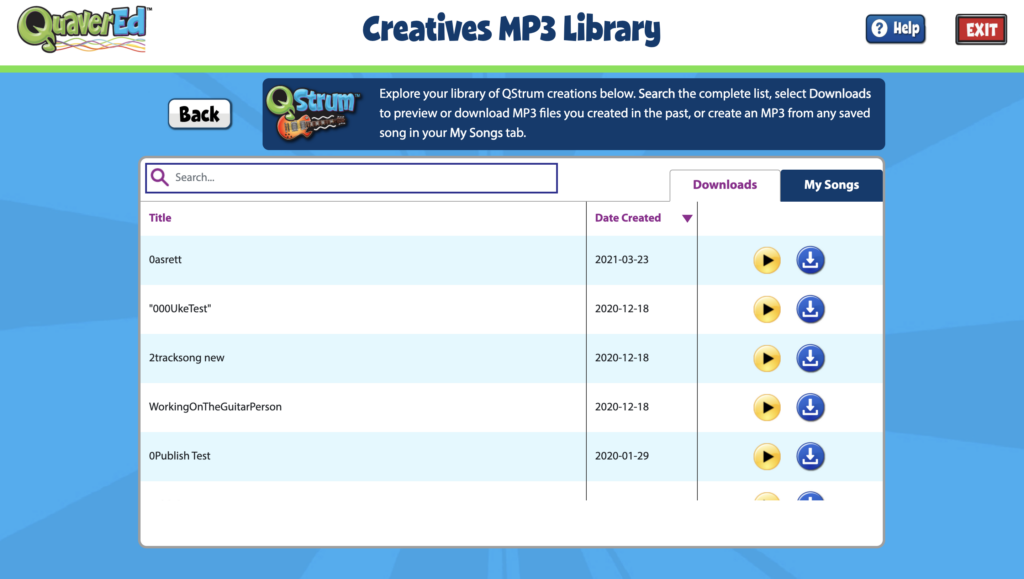QStrum allows you to create guitar, ukulele, or bass chord progressions by selecting chords and rhythm patterns.
Open Existing Files #
If you’d like to open a saved project, select MENU and OPEN.
Create Your Composition #
To change the instrument for your piece, select the instrument tile on the left and choose between a specific guitar, ukulele, or bass option.

- Choose a strum pattern tile and drag it to the staff or add individual strum durations.
- To adjust the chords, simply select one of the chord options before dragging your strum pattern or strum duration tiles into place.
- You can adjust the tempo settings by selecting Moderato and making your selection.
- Add additional measures by selecting the yellow arrows on the bottom right.
- Adjust the master volume using the slider at the bottom of the screen.
- Use the yellow buttons in the bottom left to either repeat, rewind, or playback your piece. The Play button will turn into a Pause button when selected.
- A demo animation will appear on the screen, playing the piece you’ve created. You can toggle the mirror view on in order to see a mirrored version of the playback.

Adding a PlayAlong Track #
- Select on the blue bar below your title and composer name to add a PlayAlong Track.
- You can also select Menu > PlayAlong to add
- Select the Play button next to the title to preview any PlayAlong track.
- Select a check box next to PlayAlong you wish to add.
- Choose Select to add the PlayAlong as a backing track.
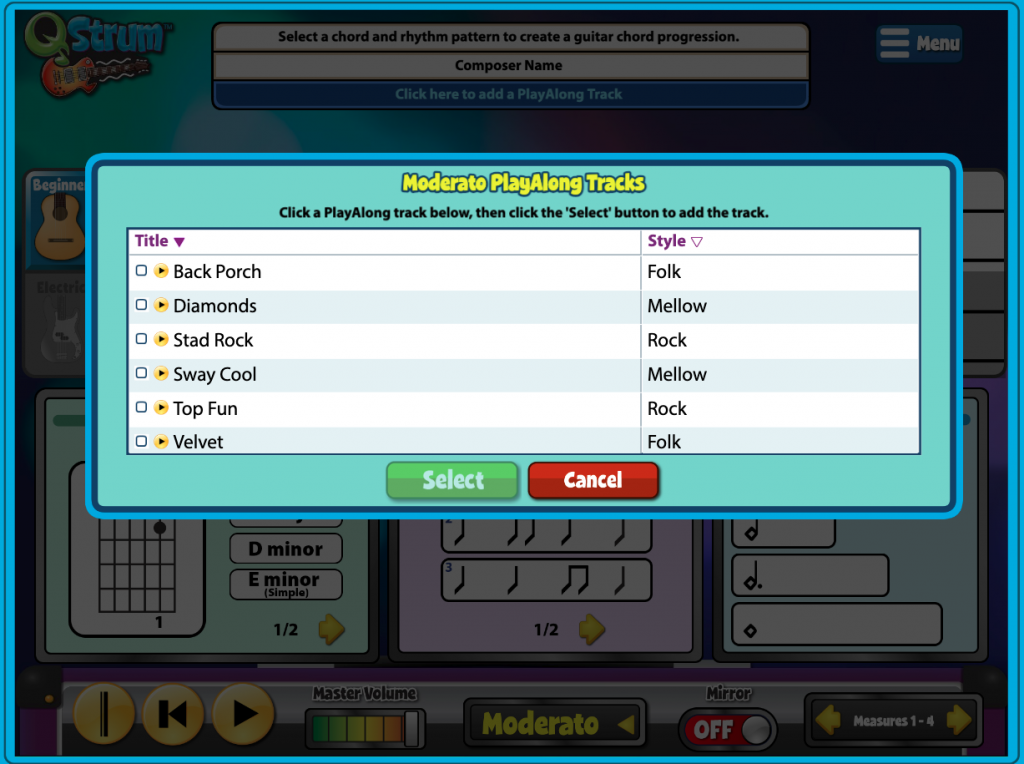
After Adding PlayAlong Track #
- You can play through the PlayAlong, before adding notes to your composition.
- Once added, you will notice the chord progression of the PlayAlong Track is at the top of each column.
- Once added, a volume slider will appear next to your PlayAlong’s title, allowing you to edit the mix of the PlayAlong vs. your QStrum.
- Select the red X to remove the PlayAlong Track.
Note: Play-Along Tracks are tempo specific; if you change the tempo of your composition, you will lose your current Play-Along Track.
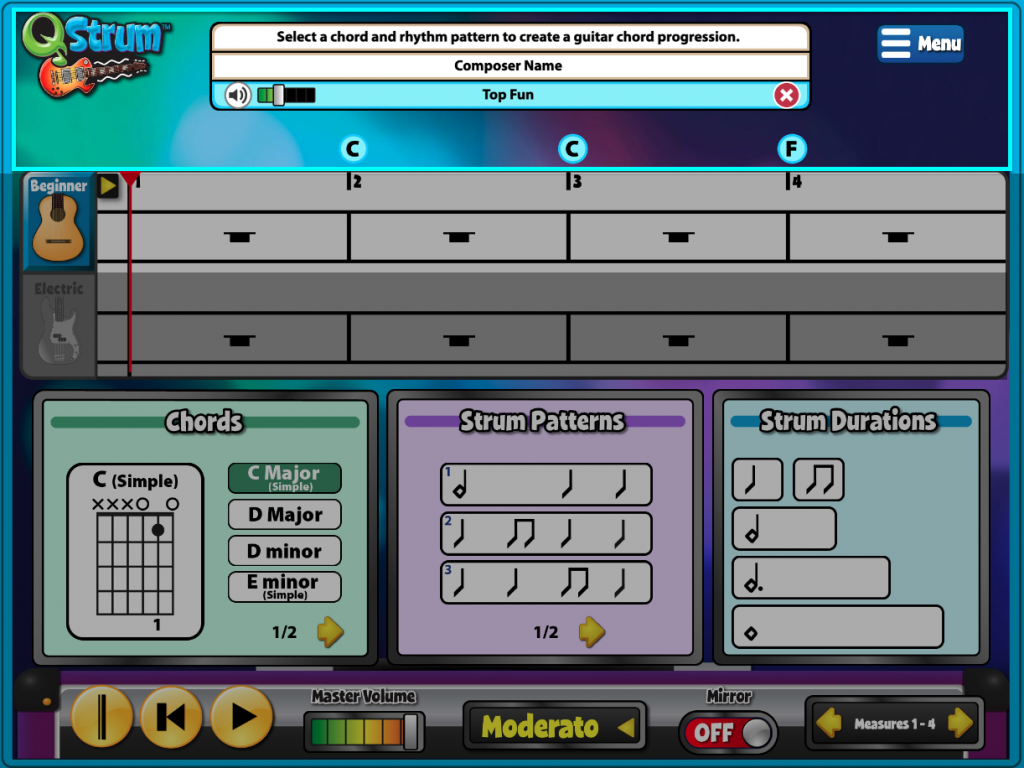
Save Your Project and Download It #
- Select MENU in the top right corner of the screen and select SAVE to save your project. You will be asked to give your project a title.
- Select MAKE MP3 from the menu and then DOWNLOAD the mp3 when it’s ready.
How to Assign QStrum to Your Students #
To begin, create a folder where your assignment will live.
- With no folder selected, select MENU, NEW FOLDER, and give it a title.
- Name your folder something like “QStrum Assignment” and select OK.
Your folder will now appear on the right side of your Resource Manager.
- Search for QStrum in Resource Manager.
- Drag the resource into your folder on the right side of the screen.
- Select the folder and hit MENU and NEW ASSIGNMENT TEMPLATE.
- Name your assignment, “QStrum.”
- Open the folder and you’ll see your named Assignment with a green “A” next to it.
- Select MENU and ASSIGN TO CLASS to choose a class or classes you would like to give the assignment to.
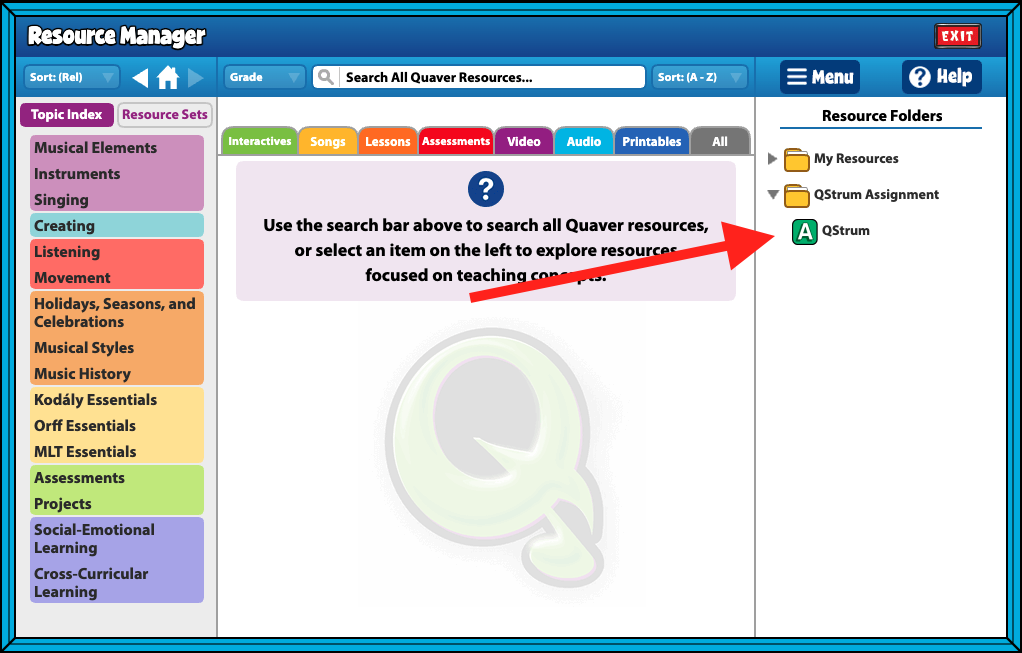
How students submit QStrum when assigned
- When students launch the assignment, they will be able to create their composition, and a SUBMIT option will appear on the MENU when they are done and ready to submit.
- Students should SAVE their submission if they wish to access it later.
How teachers view student submissions
- Completed submissions will appear in your GradeBook next to the student’s name with an orange checkmark.
- Select the checkmark to review their work.

Classic Creative Mp3 Download #
If you had QuaverMusic while on Adobe Flash, which is no longer supported, you will see a third tab ‘Classic Creatives’ tab.
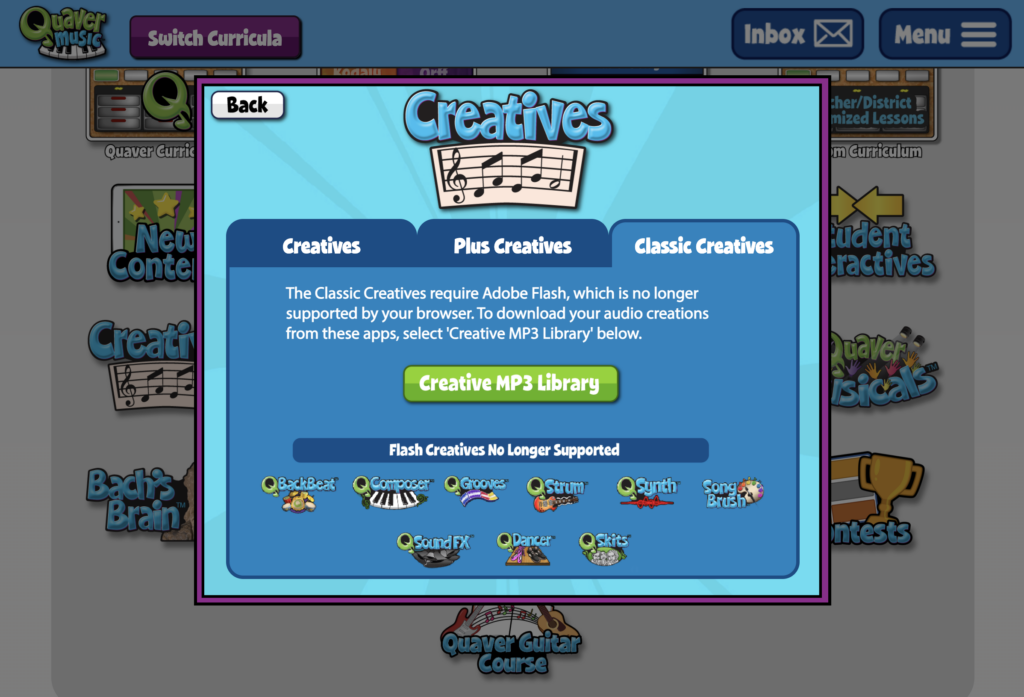
Although QGrooves, QComposer, QBackBeat, and QStrum are no longer supported by Adobe Flash in their original form, you can still access any saved creations you made. Search your list, select Downloads to preview or download MP3 files you created in the past, or create an MP3 from any saved song in your My Songs tab.
